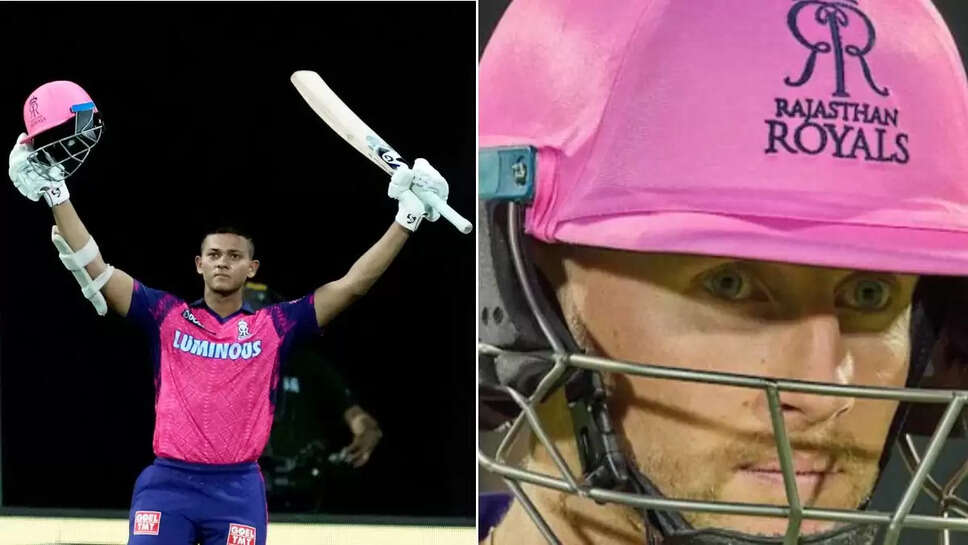Jaiswal, Akash Deep, Nitish Reddy Learn from Global Greats in IPL Dugouts

For decades, Indian cricketers would hone their skills in the grinding conditions of English county cricket. Facing green tops under grey skies, long spells, and an unforgiving schedule helped polish the temperament and technique of many greats—from Sunil Gavaskar to Rahul Dravid. But in the age of the IPL, the traditional pilgrimage to the counties is slowly giving way to something far more glamorous, lucrative, and surprisingly educational.
The Indian Premier League is no longer just a T20 money-spinner. It has evolved into a high-performance, cross-cultural academy—where emerging Indian players don’t just rub shoulders with the best in the world, they actively seek mentorship, absorb tactical wisdom, and learn the craft from seasoned global stars in real-time pressure situations. For many youngsters, the IPL is the new county stint. And they are making the most of it.
The Mentor-Apprentice Shift Within the IPL
Modern cricket is shaped by fast learning curves. By the time a player is 22, they are expected to be tactically aware, emotionally steady, and physically elite. While domestic cricket builds the foundation, IPL accelerates the transformation. And unlike the rigid coaching hierarchies of the past, today’s IPL environment encourages open dialogue—whether you're a net bowler or a capped international.
Franchise dressing rooms are melting pots. Fast bowlers like Josh Hazlewood, Pat Cummins, and Kagiso Rabada may be rivals at the international level, but within their IPL teams, they become mentors. Indian youngsters are using this access not for selfies, but for study.
Jaiswal and Root: The Mind Behind the Technique
Yashasvi Jaiswal, known for his flamboyant strokeplay and attacking intent, credits much of his recent growth to sharing a dressing room with Joe Root at Rajasthan Royals. Root, a classical English batter with textbook balance and a sharp cricketing brain, is as far from Jaiswal’s natural style as it gets—but that’s precisely what made him a perfect mentor.
In training sessions, Jaiswal could often be seen observing Root’s footwork, balance against spinners, and ability to rotate strike. The duo reportedly had long conversations about mental discipline—how to bat through phases, counter dry spells, and adapt technique to different formats. Root, known for his poise and humility, became a sounding board for Jaiswal’s questions, offering tips not only on shot selection but also on emotional regulation.
The results are visible. Jaiswal has begun to exhibit greater maturity in his shot selection and is increasingly comfortable against both pace and spin—an evolution that is partly rooted in his IPL mentorship experience.
Akash Deep and Hazlewood: Fast Bowling Lessons from the Best
For a young pacer like Akash Deep, sharing space with someone like Josh Hazlewood is like attending a private masterclass on seam bowling.
Hazlewood’s career has been a study in control, consistency, and clever variations. Not the flashiest of bowlers, but arguably one of the most dependable across formats. In IPL nets, Akash Deep made a habit of bowling side-by-side with Hazlewood, absorbing everything—from wrist position and seam presentation to game reading and recovery protocols.
Reports suggest Hazlewood never held back in sharing insights. He’d discuss how to plan an over, when to go wide of the crease, how to use the cross-seam ball in T20s, and what cues to pick from a batter’s body language. For a rookie learning the art of bowling under pressure, such mentorship is more than just exposure—it’s transformation.
Akash Deep, now faster and sharper, reflects that very influence. He bowls with more clarity, attacking zones with a more defined plan—something that cannot be taught easily in domestic nets.
Nitish Kumar Reddy and Cummins: Power, Poise, and Patience
Another standout name from IPL 2024 was Nitish Kumar Reddy, who broke through as a batting all-rounder with composure beyond his years. Playing under the captaincy of Pat Cummins for Sunrisers Hyderabad, Nitish used his time not just to improve his fitness and skills, but to understand what it takes to lead and think like an elite cricketer.
Cummins, besides being a world-class pacer, is known for his calm demeanor and tactical sharpness. Nitish would often initiate conversations with Cummins on handling high-pressure moments, choosing the right plans when bowling in death overs, and how to prepare mentally before big games.
The result? Nitish developed into a more confident all-round package. With the bat, he showed range and maturity. With the ball, he was more measured, understanding when to take the pace off and when to go full tilt. But more than skills, it was the belief that set him apart—confidence that often comes from absorbing greatness up close.
A New Learning Curve Without Leaving the Country
Earlier, county stints provided prolonged match exposure and cultural assimilation. But they weren’t always accessible to every young Indian cricketer. Language barriers, visa issues, and lack of game-time in packed county squads meant that only a few benefited.
The IPL, however, is different. It brings the world’s best to India, puts them in the same training environment, and creates natural mentor-mentee relationships. In a way, Indian cricketers are now gaining international cricket education without stepping out of home soil.
And this isn’t restricted to players alone. Even Indian domestic coaches and trainers are picking up world-class fitness protocols, rehab processes, and analytical techniques from international support staff.
Franchise Ecosystems as Modern Cricket Schools
More franchises are investing in year-round development. Several teams now have Emerging Player Programs, where promising youngsters train even in the off-season. These setups provide not just physical and technical drills but also classroom-style sessions with analytics teams, former legends, and high-performance experts.
This year-round exposure ensures that the IPL isn’t just a two-month festival—it’s a full-time finishing school. Players like Tilak Varma, Riyan Parag, and Mayank Yadav are being carefully nurtured through such systems. And with franchises increasingly valuing long-term development, mentorship is now a structured priority—not a happy accident.
The Emotional Impact of Sharing Space with Legends
For a 21-year-old Indian cricketer, getting praise from MS Dhoni, learning from Dale Steyn, or joking around with David Warner is more than just a career milestone—it’s deeply empowering. It tells them they belong. That they are part of the big league.
Such psychological reinforcement is hard to quantify, but its effect is unmistakable. The quiet confidence, the hunger to learn, and the openness to feedback—these are habits formed not just through runs and wickets, but through mentorship and belief.
The New Classroom of Indian Cricket
The Indian Premier League may be a billion-dollar business, but for the emerging generation of Indian cricketers, it’s also a classroom without walls. It’s where a raw left-arm pacer learns the art of control from a South African veteran, where a teenage spinner picks up tips from an Afghan wizard, and where a fearless batter understands pressure management from a World Cup-winning captain.
In this new age, IPL is not merely a stepping stone—it’s a substitute for the old county route. One that offers more diversity, more intensity, and more mentorship—packaged into every over, every net session, and every shared moment in the dressing room.
